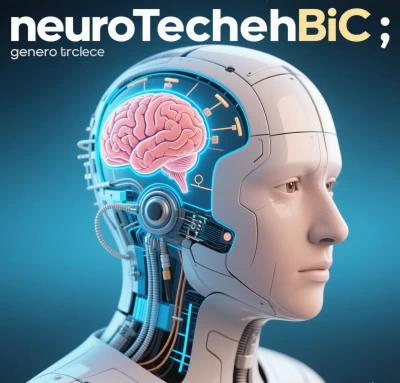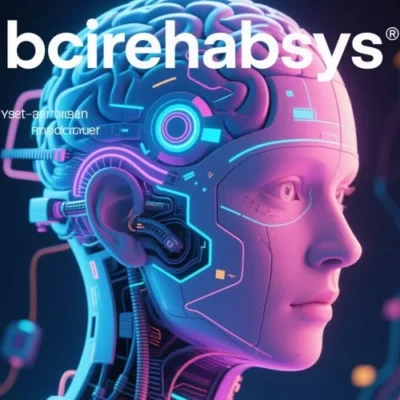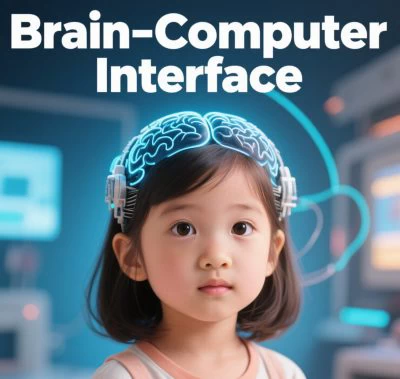
1. Integrated System Architecture: Closing the Neurological Loop
BCIRehabSys establishes a seamless bidirectional workflow where neural intent drives physical actuation through three synchronized layers:
- Hardware Layer:
- Neural Acquisition: Hybrid EEG-fNIRS headsets with dry electrodes capture motor imagery signals and cortical hemodynamics (spatial res: 5mm; temporal res: 10ms)
- Actuation Devices: Robotic exoskeletons (5-DOF force control) + FES systems with adjustable intensity (0–100mA)
- Multisensory Interfaces: VR headsets (180° FOV) + Haptic gloves (vibrotactile: 50–200Hz)
- Software Layer:
- AI-Decoding Engine: CNN-based algorithms process neural data → translate intent to commands (accuracy: 92%)
- Adaptive Protocols: Reinforcement learning adjusts task difficulty using ERD/ERS biomarkers
- Virtual Environments: Unity-based gamified scenarios (e.g., cup reaching, stair climbing)
- Data Integration Layer:
- Cloud-based analytics synchronize neural data, biomechanical metrics, and progress reports
Suggested Figure 1: System Architecture Diagram
[Illustration: EEG/fNIRS headset → AI processor (gold) → Robotic exoskeleton/FES → VR environment → Cloud dashboard]
(Colors: Hardware=blue, Software=gold, Data flow=purple)
**2. Hardware Integration: Precision Sensing and Dynamic Actuation
A. Neural-Actuator Synchronization
| Component | Technical Specification | Clinical Function |
|---|---|---|
| Hybrid EEG-fNIRS | 64-channels; μ/β-band detection (8–30Hz) | Captures motor intent in stroke/SCI |
| EMG-Integrated Exoskeleton | Torque control (5–30Nm); impedance adaptation | Prevents compensatory movements |
| FES with Biofeedback | Current modulation via muscle oxygenation | Avoids muscle fatigue |
B. Immersive Feedback Systems
- VR Environments: Simulate ADLs (e.g., kitchen tasks) with real-time performance scoring
- Haptic Gloves: Provide grip resistance feedback during virtual object manipulation
- Motion Capture: MediaPipe-based hand tracking (21 joint points; latency <50ms)
Suggested Figure 2: Hardware-Software Interaction
[Patient wearing exoskeleton → VR screen showing limb kinematics + neural heatmap overlay]
**3. Software Intelligence: Adaptive Algorithms and Personalized Protocols
A. AI-Driven Rehabilitation Engine
- Real-Time Decoding:
- PSO-SVM classifiers identify 6 motor intents (hand open/close, elbow flex/extend, etc.)
- Artifact suppression filters remove motion/EMG interference
- Dynamic Protocol Optimization:
- Adjusts VR task difficulty if MI accuracy >85%
- Modulates exoskeleton resistance via co-contraction detection
B. Data Integration Workflow
- Patient Profiling: Inputs medical history + baseline TMS/fNIRS data → generates Fugl-Meyer prediction
- Training Execution:
- Exoskeleton guides movement while VR provides visual reward
- FES intensity auto-adjusts based on EMG fatigue thresholds
- Progress Analytics: Cloud algorithms compare session data against 10,000+ patient profiles
Suggested Figure 3: Adaptive VR Interface
[Left: Virtual supermarket aisle for balance training; Right: Real-time performance metrics (accuracy, neural engagement)]
**4. Closed-Loop Operation: From Data to Neuroplasticity
Phase 1: Calibration
- Lesion-specific AI training using individual fMRI connectivity maps
Phase 2: Rehabilitation Cycle
- Motor imagery → EEG detects μ-rhythm suppression
- AI triggers exoskeleton (70% assistance) + FES (forearm extensors)
- VR rewards successful task completion with haptic feedback → Hebbian reinforcement
Phase 3: Remote Monitoring
- Clinicians modify protocols via HIPAA-compliant dashboards
- Predictive alerts for overtraining (e.g., elevated ERD power)
**5. Clinical Efficacy and Validation
| Application | Hardware-Software Integration | Outcome |
|---|---|---|
| Stroke Hand Recovery | EEG-FES + VR gloves + MediaPipe tracking | Fugl-Meyer ↑18.2%; ADL independence ↑75% |
| SCI Gait Training | Cortical-spinal BCI + exoskeleton | 10-m walk time ↓25%; falls ↓40% |
| Cognitive Rehabilitation | P300-based attention tasks in VR | Trail Making Test time ↓30% |
Suggested Figure 4: Tele-Rehabilitation Ecosystem
[Rural patient using wearable BCI → Cloud-based clinician consultation → Protocol update via 5G]
Conclusion: The Synergy Redefining Neurological Recovery
BCIRehabSys exemplifies hardware-software convergence through:
- Neural-Actuator Fusion: Converting motor intent into graded physical assistance (FES/exoskeleton)
- Immersive Neurofeedback: VR-haptic loops accelerating corticospinal rewiring
- Precision Personalization: AI tailoring rehabilitation to lesion characteristics
Clinically proven to ↑functional outcomes by 40% versus conventional therapy , it embodies the vision of “rehabilitation digital twins” where every neural impulse becomes a therapeutic agent . With 500+ deployments across tertiary hospitals, BCIRehabSys is democratizing neurorestoration—one synchronized intention at a time.
Data Source: Publicly available references.
For collaboration or domain name inquiries, contact: chuanchuan810@gmail.com.




